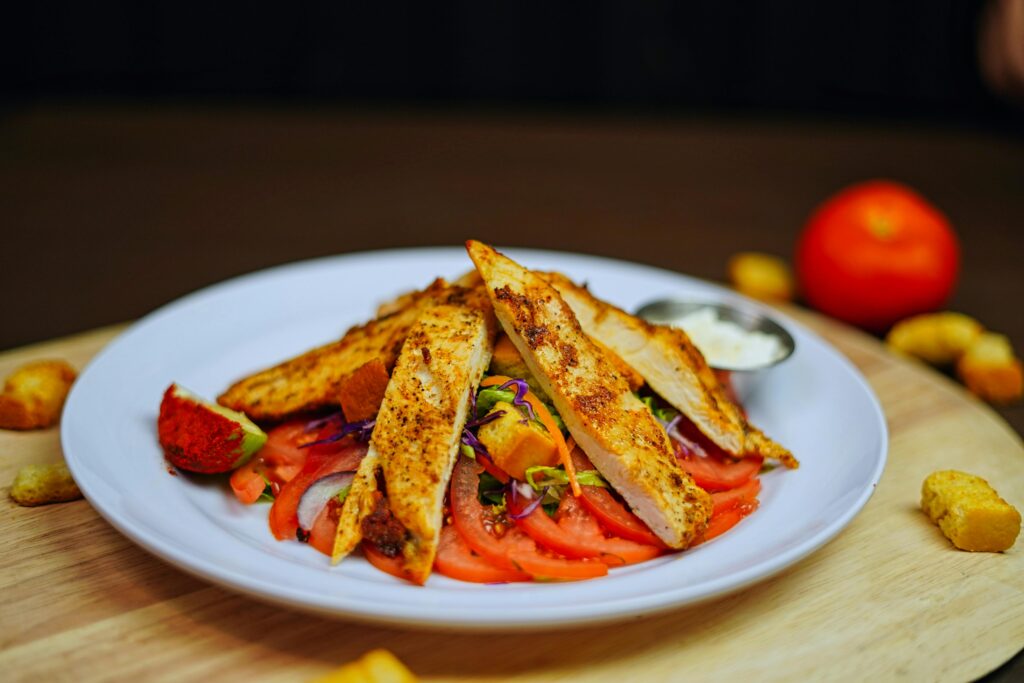Eating a balanced diet is one of the most effective ways to support overall health, maintain energy levels, and prevent chronic illnesses. For women, whose nutritional needs can shift due to factors like hormonal changes, pregnancy, and aging, understanding how to construct a balanced plate is essential. A well-rounded meal ensures that your body receives the necessary nutrients to function optimally, promoting not only physical health but also mental well-being.
A balanced plate is more than just filling your dish with random food items—it’s about the right proportions of macronutrients (proteins, carbohydrates, and fats) and micronutrients (vitamins and minerals) that work together to support bodily functions. Science has shown that eating a variety of nutrient-dense foods can help stabilize blood sugar, manage weight, and reduce the risk of conditions like heart disease, diabetes, and osteoporosis.
The foundation of a balanced plate begins with vegetables, which should occupy the largest portion of your meal. Vegetables are low in calories and high in fiber, vitamins, and antioxidants. Leafy greens like spinach, kale, and arugula provide a wealth of nutrients, including calcium and folate, essential for bone health and cell repair. Colorful vegetables such as bell peppers, carrots, and tomatoes are rich in phytonutrients that combat inflammation and support healthy skin. Cruciferous vegetables like broccoli and Brussels sprouts contain compounds that aid in detoxification and hormonal balance, making them particularly beneficial for women.
Protein is another essential component of a balanced plate. It provides the amino acids necessary for muscle repair, immune support, and the production of enzymes and hormones. Lean animal proteins such as chicken, turkey, and fish are excellent sources, while plant-based options like beans, lentils, tofu, and tempeh offer high-quality protein with added fiber. Fatty fish like salmon and mackerel are particularly valuable due to their omega-3 fatty acids, which support brain health, reduce inflammation, and promote heart health. Research indicates that women who consume adequate protein experience better muscle mass retention and improved metabolic health, particularly as they age.
Carbohydrates are often misunderstood, but they are a crucial energy source for the body. The key is to focus on complex carbohydrates, which are digested slowly and provide sustained energy. Whole grains such as quinoa, brown rice, and oats are rich in fiber and B vitamins, supporting digestion and energy production. Starchy vegetables like sweet potatoes and butternut squash are nutrient-dense options that offer natural sweetness along with vitamins A and C. For women, incorporating these slow-digesting carbohydrates can help stabilize blood sugar levels, reducing energy crashes and curbing cravings.
Healthy fats are an indispensable part of a balanced plate. They support brain health, hormone production, and the absorption of fat-soluble vitamins like A, D, E, and K. Avocado, nuts, seeds, and olive oil are excellent sources of monounsaturated fats that promote heart health and enhance the flavor of meals. Omega-3-rich foods, like walnuts and flaxseeds, also provide anti-inflammatory benefits that are particularly valuable for women experiencing hormonal fluctuations or joint discomfort.
In addition to macronutrients, a balanced plate should include a variety of micronutrient-rich foods to meet your body’s specific needs. Iron, for example, is crucial for women due to monthly blood loss during menstruation. Iron-rich foods like spinach, lentils, and lean meats, paired with vitamin C from citrus fruits or bell peppers, enhance absorption. Calcium and vitamin D are vital for bone health, especially as women age and the risk of osteoporosis increases. Dairy products, fortified plant milks, and leafy greens are excellent sources, while sunlight exposure and foods like fatty fish can help meet vitamin D requirements.
Hydration is another often-overlooked aspect of balanced nutrition. While water doesn’t appear on your plate, it plays a critical role in digestion, circulation, and temperature regulation. Herbal teas, infused waters, and foods with high water content like cucumbers and watermelon can help you stay hydrated while adding variety to your routine.
To create a balanced plate, consider visualizing your dish divided into sections. Half of your plate should consist of vegetables, focusing on a variety of colors and types to maximize nutrient diversity. One-quarter should be dedicated to lean protein, whether from animal or plant sources, ensuring you meet your body’s amino acid needs. The remaining quarter should include complex carbohydrates, providing sustained energy and dietary fiber. Add a source of healthy fats, such as a drizzle of olive oil or a sprinkle of nuts, to round out the meal.
Mindful eating is an integral part of building a balanced plate. Pay attention to portion sizes, hunger cues, and the quality of ingredients. Eating slowly and savoring your meals allows you to enjoy the flavors and textures while giving your body time to signal fullness. Preparing meals at home is another great way to ensure you’re using fresh, wholesome ingredients and avoiding excess sodium, sugar, and unhealthy fats found in processed foods.
A balanced plate is not only about nutrition—it’s also about enjoyment and sustainability. Incorporating your favorite flavors and cuisines can make healthy eating a joyful experience rather than a chore. Experiment with herbs, spices, and different cooking techniques to keep meals exciting and flavorful. Including occasional indulgences in moderation ensures that your approach to nutrition is flexible and realistic, helping you maintain it long-term.
Science continues to reveal the profound impact of nutrition on women’s health, from supporting reproductive health and reducing PMS symptoms to enhancing mood and cognitive function. By prioritizing a balanced plate, you can fuel your body with the nutrients it needs to thrive, empowering you to feel your best at every stage of life.
Building a balanced plate is both an art and a science. It requires an understanding of your body’s needs, a willingness to experiment with ingredients, and a commitment to prioritizing your health. Whether you’re cooking for yourself or your family, taking the time to create nourishing meals is an act of self-care that pays dividends for your physical and emotional well-being.





